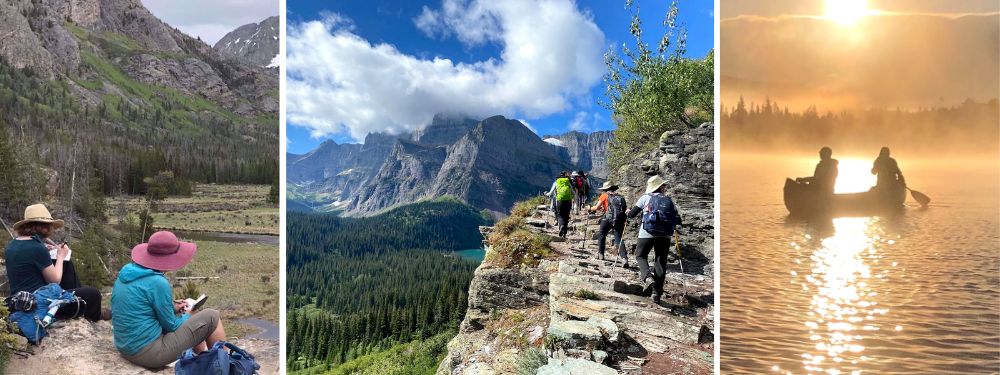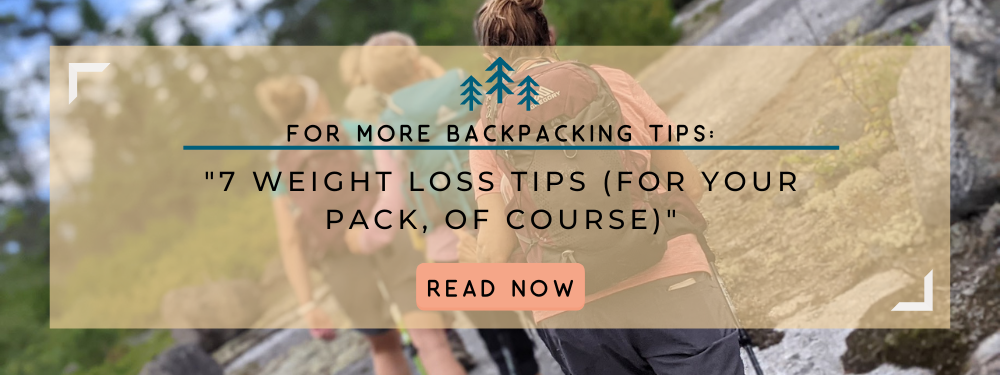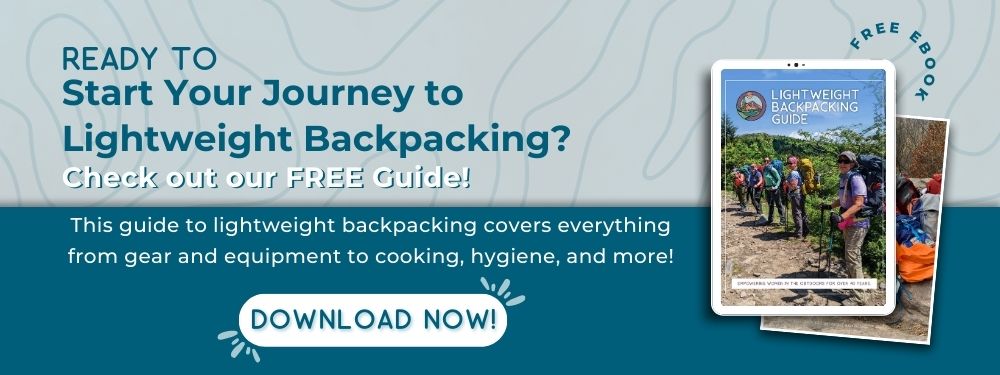Backpacking is one of our favorite activities at AGC! Over the years, we have spent a lot of time fine-tuning our Intro to Lightweight Backpacking on the AT trip, along with a companion preparation document, which we have recently released as a FREE ebook - find it below. Our goal with this trip and the ebook is to help you get ready for a great backcountry experience, whether you want to just venture out for a single night or an epic thru-hike.
Lightweight backpacking is a remarkable experience that we hope everyone gets to enjoy at least once in their life. Decades ago, packs weighed 60, 70, or even close to 100 pounds. With modern technology and a vast array of resources at our fingertips, it is now possible to keep your pack below 30 pounds–even when fully loaded with food and water. Yet, it can still be difficult to know what to leave in and what to take out without some guidance. In this short blog, we’ll help you better understand what is already in your pack and what you might be able to live without.
Tips on Reducing Weight With the Gear You Have
Your tent, pack, sleep system, and more: an ounce here and there can add up.
Backpacking tents these days are considered “ultralight” if they weigh under 2 pounds. If your tent is overweight, don’t worry: there are ways to address this. First, let’s go over your sleep system:
-
Replace your stakes. The stakes that come with tents can be heavy. You can shed weight by switching out to ultralight stakes, which you can find online or at your local outfitter.
-
Change your tent footprint. The footprint, or sheet of material you place on the ground to protect your tent from dirt and punctures, can be on the heavier side. Consider purchasing a roll of Tyvek from the hardware store: it’s light, durable, and can shave ounces off your pack weight.
-
Think of how you can make items multi-use. Many backpacking tents are no longer freestanding, so they no longer come with their own internal metal suspension system. These styles of tents are supported by tension cords, tent stakes, and your trekking poles: which you already carry. By removing the internal metal frame of a freestanding tent from the equation, you can save quite a lot of weight.
-
Consider a quilt. Sleeping bags are cozy but weigh much more than quilts. Quilts are open at the bottom but have an enclosed foot box to keep your feet warm. When you lay down in a sleeping bag, the material underneath you is compressed and doesn’t really add to your level of comfort and insulation. Using a quilt instead of a sleeping bag can save weight by removing that extra material.
Another place where people carry unexpected ounces or pounds is their water storage method. While insulated water bottles are sturdy and a great place to display your stickers, they can add a lot of weight to your kit. Some of these water bottles weigh a pound just on their own! Water weighs 2.2 pounds per liter, which can add up quickly.
To reduce weight, consider purchasing two liter-sized Smartwater bottles. They are incredibly lightweight, fit easily into most backpack side pockets, and the threads match those of a Sawyer water filter. You can fill up these water bottles with untreated water, screw on your water filter, and drink through the filter, making your water resupply fast and as lightweight as possible. Be sure to recycle them when you’re done hiking!

Cut out Luxury Items
Now that we’ve gone over ways to cut weight from your essentials let’s determine what a luxury item is and when you should consider removing it from your pack entirely.
A “luxury item” is anything non-essential to your survival when recreating in the backcountry. For example, while having a hot meal at the end of the day is enjoyable, it’s not necessary for you to have a stove and fuel. Many backpackers, therefore, consider the added weight of a stove, fuel, and cookpot “luxury” items. Instead of carrying fuel, they’ll “cold-soak” their food by soaking ramen, oatmeal, or freeze-dried meals in water for 30 minutes to an hour or will eat meal replacement bars.
Here are some examples of luxury items:
-
Umbrellas
-
Sit pads or camp chairs
-
Journals and books
-
Cameras
-
Pillows
Morale in the Backcountry
Just because you don’t need an item to survive doesn’t mean you don’t need it. Morale plays a huge role in your enjoyment of backpacking. If you can’t imagine ending a day hiking without a warm meal, then take your stove and fuel with you! If writing about your day is crucial to remembering everything you experienced, carry a journal.
Nowadays, it’s relatively easy to find lightweight replacements for the items you want to pack. Fuel canisters come in sizes that will fit in the palm of your hand. Instead of carrying physical books, you can download a book onto your phone ahead of time.
Ultimately, weight management is a complex process. Even the most minor changes can help you reduce excess weight, making your hike much less exhausting. Better yet, the less gear you have, the easier it will be to manage the weight and bulk of your pack.
When it's all said and done, no one knows your needs in the backcountry better than you. Only you can determine what luxury items are worth carrying with you. And while you may make mistakes and wish you had packed a few more luxury items, the real error would be staying home when your heart wants to be on the trail!
For even more tips on lightweight backpacking, download our FREE Intro to Lightweight Backpacking ebook:
Disclaimer: This blog post features some affiliate links. This means AGC gets a small commission if you make a purchase (at no extra cost to you). Thank you for the support!





